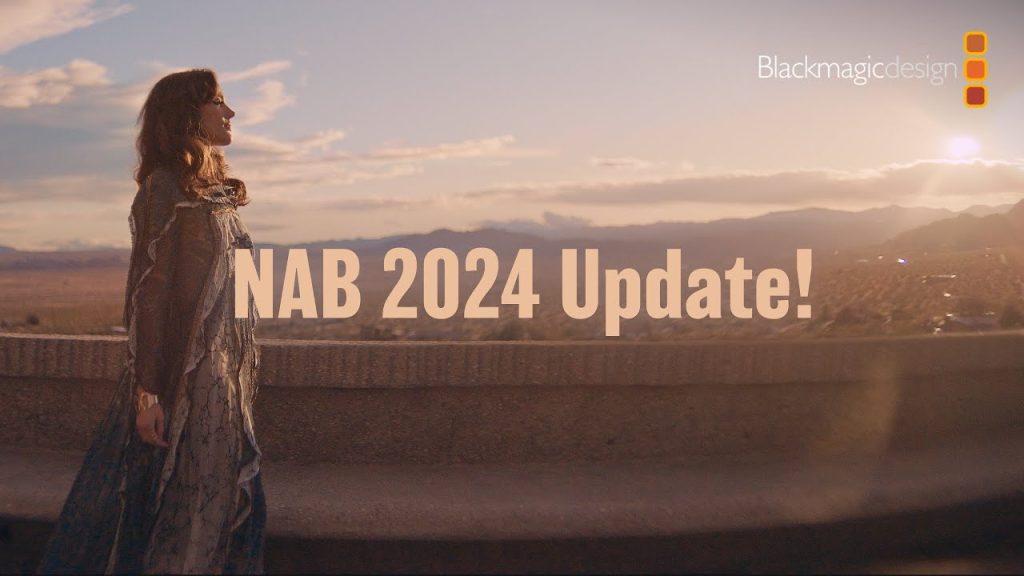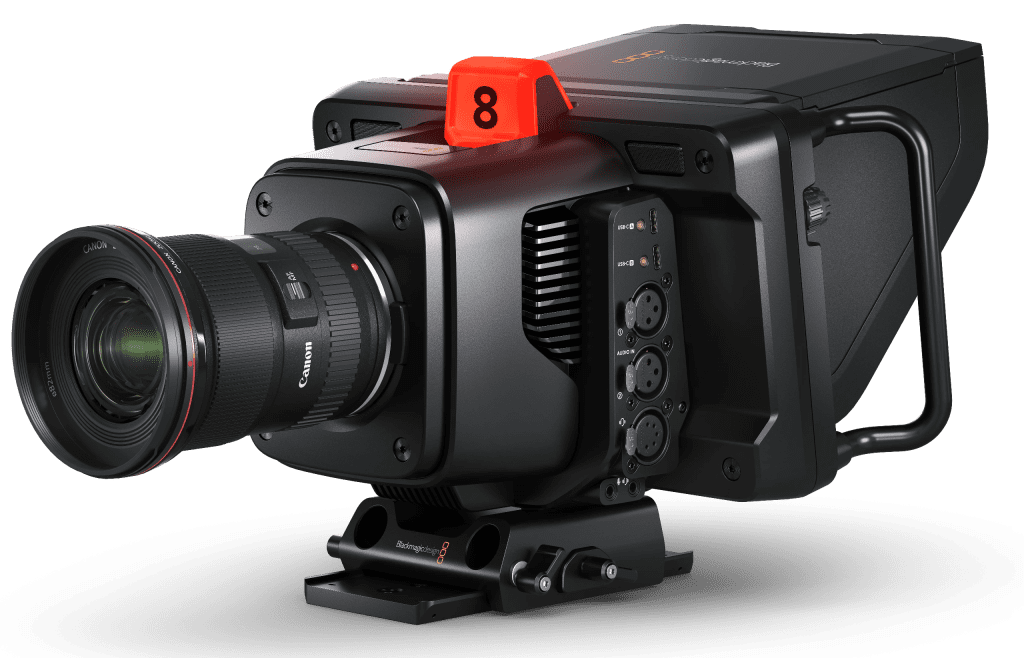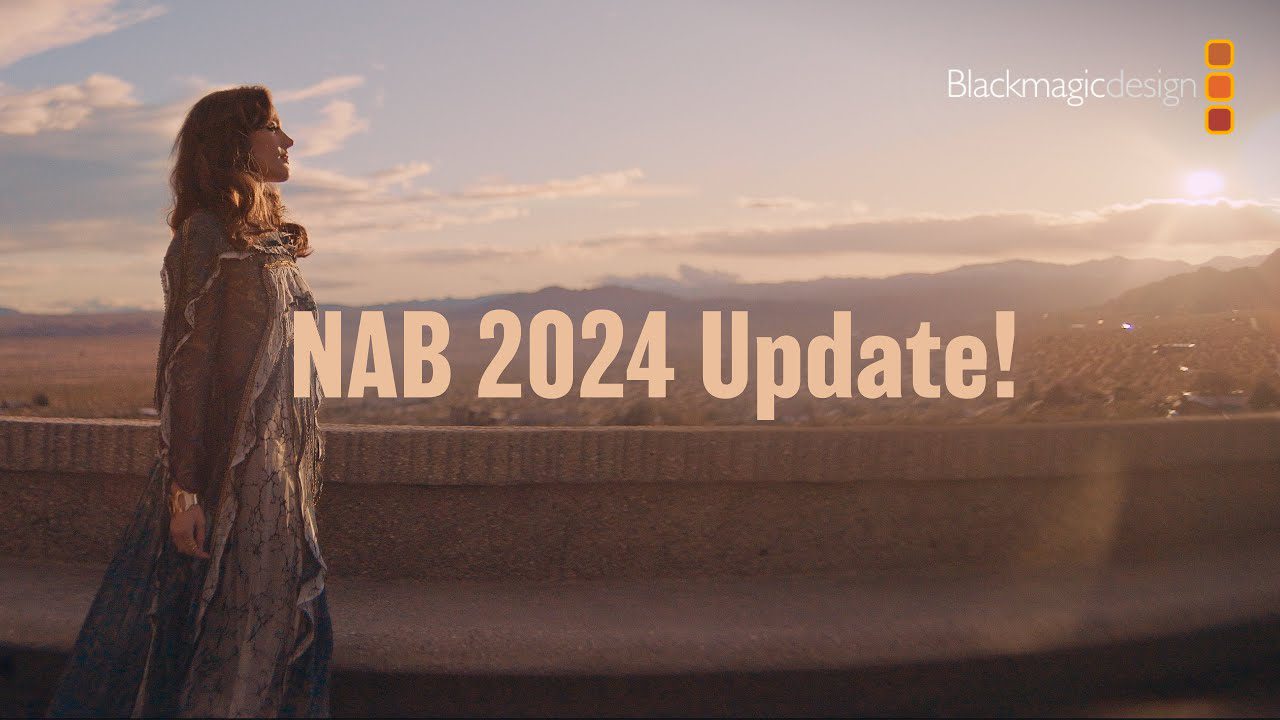Event Rig Series – Part 1: Blackmagic’s NAB Presentation was nuts! They launched some amazing products but it was nuts!

Blackmagic has certainly been busy over the last few months. I can’t believe how many new and updated products they announced on Friday in their pre-NAB show stream. I unfortunately didn’t get to watch it live and had to wait for the little one to go to bed first and I’m glad I did. I couldn’t have caught everything with a little one running about the place.
What was released?
For those of you who didn’t see the mammoth 2-hour stream Here’s a list of all the products that Blackmagic released or updated:
- Videohub 120×120 12G
- Their new massive 120×120 model zero latency 12G-SDI video router supports any combination of SD, HD and UltraHD on the router at the same time.
- ATEM Constellation 4K 2M/E and 1M/E
- Advances UltraHD live production switchers with up to 20 inputs, 12 aux outputs, 6 DVEs, 8 Chroma Keyers, 2 Multiviews and more.
- ATEM Micro Panel
- Extremely portable and affordable control surface for use with ATEM Software Control and works with all models of ATEM Switchers!
- Blackmagic Audio Monitor 12G G3
- Get powerful audio monitoring in an incredibly compact 1RU size! Includes accurate audio meters, 12G SDi and SMPTE 2110 IP Video
- SmartView 4K G3
- The world’s first UltraHD broadcast monitor with both 12G SDi and SMPTE 2110 IP Video inputs.
- Blackmagic 2110 IP Converters
- A new family of affordable 2110-IP video converters for broadcast and live productions. Models for monitoring, cameras and presentations.
- Blackmagic Ethernet Switch
- World’s first Ethernet Switch for the Film and Television Industry with 10G Ethernet for SMPTE-2110 IP Video and front panel routing.
- Blackmagic Media Player 10G
- New Thunderbolt capture and playback solution for live production with fill and key video, extended desktop, 10G Ethernet and monitoring!
- Blackmagic Cloudstore Max
- High-performance Flash Storage for the Television Industry, up to 48TB capacity, fast 100GB Ethernet, 4 x 10G Ethernet and Blackmagic Cloud Sync
- Davinci Resolve 19
- Adds new AI tools and over 100 upgrades including IntelliTrack AI, ColourSlice Grading, plus multi-source editing, live replay and more!
- DaVinci Resolve Replay Editor
- New editor Panel for Multi-cam editing for news cutting and live sports replay. Combines replay and fast editing in the same panel.
- DaVinci Resolve Micro Colour Panel
- Powerful Colour Panel gives you all the control you need to create cinematic images
- Blackmagic PYXIS 6K
- Advanced digital film camera with fill frame 6K sensor in EF, PL, or L-mount models, Blackmagic RAW and Global media sync to Blackmagic Cloud.
- Blackmagic URSA Cine 12K
- Revolutionary Large format digital film camera with RGBW 26x24mm sensor, 16 stops of Dynamic range and Blackmagic RAW syncing to DaVinci Resolve
- Blackmagic Media Dock
- Mount and share over your network media modules from Blackmagic URSA Cine Cameras. Includes Blackmagic Cloud Sync
Just looking at that list boggles my mind, let alone all the details they went into for each product. you can see why it was a 2-hour stream now. I’m not going to go through each product individually. But I am going to dive into the IP 2110 IP products. I’ve not had the opportunity to use these before and think a dive into these may change the way I do production in the future, and they tie in nicely with my latest post about using Dante with ATEM Switchers.
Blackmagic 2110 IP Devices
Let’s take a closer look at the range of 2110 IP devices that Blackmagic now supplies. They have a wide range of SMPTE-2110 IP video products, including converters, video and audio monitors and even cameras that all support UltraHD using low-cost 10G ethernet. Most of the converter models are Bi-Directional, so are great for use on cameras when you need an extra program return feed. All of the Rackmount models have a colour LCD for monitoring, menus and diagnostics. All of the various models conform to the SMPTE ST-2110 standard for IP Video, including PTP clocks and even NMOS support so you can make connections using a video router panel.
All of the converters have been designed to integrate SDI equipment into 2110 IP broadcast systems. The Rackmount models can be installed in equipment racks next to the equipment you are converting. A nice additional benefit is that most of the ethernet-based 2110 IP products can be powered via the ethernet cable making setup nice and easy with just one cable. There is also a range of 2110 IP products that have SFP ports rather than internet so you can use fibre to cover long distances.
Blackmagic 2110 Mini IP to HDMI
The 2110 IP Mini Ip to HDMI converter comes in two flavours, ethernet and SFP, and allows you to monitor 2110 IP video and audio on any HDMI monitor or TV. If you are using the Ethernet version of the product you can power the device via PoE otherwise you’ll need to use the included power adaptor.
Blackmagic 2110 IP Mini BiDirect 12G
The BiDirect 12G converter allows you to not only convert IP 2110 Ip feeds to SDI but allows you so convert broadcast cameras with SDI connections to 2110 IP video systems. It has a built-in 5-pin XLR, Volume buttons and a call button for talkback. The Ethernet version can be powered via PoE.
Backmagic 2110 IP Converter 3x3G
This is a rack-mounted Bi-Directional 3-channel 3G-SDI – 2110 IP Converter with a built-in control panel and LCD for status and config. It supports all SD and HD formats up to 1080p 60 and includes AC power and Remote Management.
Blackmagic 2110 P Presentation Converter
The Presentation Converter has been designed for speaker podiums with connections for laptops, projectors and microphones all in one converter. Laptops can also connect via USB for video and power.
Blackmagic 2110 IP Converter 4x12G PWR
This Rack-mounted unit converts and powers up to 4 x 2110 IP video cameras or converters. The bi-directional 4-channel 12G-SDI 2110 IP converter includes a control panel with LCD Screen and supports HD & UltraHD standards up to 2160p60.
Blackmagic 2110 IP Converter 8x12G SFP
The IP Converter 8x12G SFP is an 8-channel 12G-SDI to 2110 IP SFP converter with 8 10G Ethernet SFP models for optical fibre. It also includes a control panel and LCD for Status and supports HD and UltraHD standards up to 2160p60.
Blackmagic Studio Camera Pro
The Blackmagic Studio camera range is one of the most advanced, self-contained, live production cameras. They have the same features as large studio cameras, militarised into a single compact and portable design. With 10G Ethernet on the pro models, you can connect all signals to the camera with one single SMPTE-2110 IP Ethernet connection. That means the camera feed, return program feed, timecode, reference, tally, talkback and control are all sent down a single cable, even the camera’s power.
Blackmagic URSA Broadcast
The URSA Broadcast is an incredibly powerful camera for broadcast ENG and live studio use. For live production pair it with a Blackmagic Studio Viwfinder and Blackmagic Camera Fiber Converter to add SMPTE fibre to the camera. SMPTE Fibre lets you connect and control cameras up to 2Kkm away will full talkback, control and power all over a single cable. the B4 lens mount allows you to use ENG lens or large box studio camera lenses. Plus the Blackmagic Stdui Fibre Converter has a 10G Ethernet for 2110 IP Video support.
With all of these new or updated 2110 IP products, we have nearly everything we need for a fully IP workflow when producing content. The only things missing would be a fully 2110 Switcher and some playback and recording devices and this would give us a basic all-IP setup. In all honesty, I don’t think it will be too long before Blackmagic gives us an IP-based Switcher and I hope they roll out 2110 IP to the rest of the product in the stack. Imagine being able to have everything only your network and be able to pull feeds from all over your venue and not just the space you’re in without having to run a boatload of SDI everywhere.
I love that Blackmagic has updated the Studi Camera via a firmware update to be compatible with 2110 P as this makes the decision-making process of a 4-cam multi-cam setup a fair bit easier as no converters will be required. With that in mind let’s have a look at a very basic setup to see what we would need to have a 4-cam setup with ISO recording, video playback and live graphics generation (my go-to setup)
A basic Multi-Cam Setup

Let’s start with the easy part, the cameras. As I’m designing this setup for a controlled environment I’ll be going down the Studio Camera route here. If I were going to need this setup for outdoors or an environment with little to no light control then I would go with the Broadcast camera and accessories. I’m going with the Blackmagic Studio Camera 4K Pro G2 it comes packed with all the features I’ll need such as an EF lens mount, 12G SDI, HDMI out, 3.5mm talkback, 7″ HDR LCD with sunshade, Colour Correction, Recording to USB-C, XLR Audio, 5-Pin XLR talkback, 10G Ethernet and HD Live Streaming. On the Blackmagic website, the Studio Camera 4K Pro G2 is listed at £1806 RRP.
Next up, we need to get the video out of the camera and into the switcher to keep cabling simple (and because we’re doing a post all about 2110 IP) we’ll be running a 10G Ethernet cable (90M ~£342) from the camera to a Blackmagic 2110 IP Converter 4x12G PWR (£1998 RRP). As we’ll be taking the feed from the IP converter to the switcher and a return feed from the switcher to the IP converter this means we only need to run one Ethernet cable to the Camera and we get Power and video feeds out of the camera and a return program feed too as well as camera control and comms… all one one cable! that’s a little nuts don’t you think?


As I’d like to record all of the camera feeds in real-time so I can edit in post later on, rather than having massive SSDs plugged into the USB port of the camera I’ve gone with the option of adding a Blackmagic HyperDeck Studio Pro 4K (£1590 RRP) between each camera and the switcher. This gives the option of recording the output of the camera in real-time, with matching timecodes across the camera, So I can do a full edit of the event and tidy up any shots that may have been missed or miss-timed. I’m also including another Hyperdeck Studio 4K Pro in the bundle for playback of video of titles and graphics with key and fill. I’ll also have the option to record the main program feed to this one too.
From here, it’s off to the Switcher. I’ve gone with the Blackmagic ATEM Television Studio 4K8 (£4602 RRP). This has plenty of Video inputs for my needs and also can stream to YouTube, Facebook or other services directly from the switcher over Ethernet. The switcher will output a program feed to the venue via the dedicated program feed and a second program feed via one of the Aux outputs to one of 2 Blackmagic SmartView 4K G3s (£1246.80 RRP) The other SmarkView 4K will have the MultiView on it.

In addition to all of the above, I’ll be adding an Apple M3 Mac Mini, with 16GB RAM and 512GB of storage (£1246.80 – inc Keyboard and mouse) this will have 2 other black magic devices attached to it. A Blackmagic UltraStudio 4K Mini (£1062 RRP) to get live graphics out of the mimoLive software ran on the Mac Mini into the switcher and a Blackmagic Teranex Mini HDMI to SDI 12G (£558 RRP) so the main display of the Mac can be displayed on the SmartView 4K’s additional input on the one with the program feed.
Other than all of this I’ll be hooking each camera and the switcher up with a Beyerdynamic DT-290/M200/H80 MkII (£275 RRP) and the Beyerdynamic K190.41-1.5m (£64 RRP) for comms and adding some flight cases and SDI Cables so it’s all transportable and I can link it all together and get it all to work.
With all of that added together we have a total shopping bill of £58,075.05. Not bad for a small 4-camera Multi-cam setup. Sure £58,000 isn’t cheap but I’ve seen rigs with similar capabilities cost a boatload more. I’ve probably missed a few things out (please let me know if I have done so in the comments), while you’re there let me know if you would change anything or where you would cut costs if you needed to. Whilst these are flights of fancy for me, at the moment, I do hope someone might get some use out of these ideas. Do let me know if you do.
I plan to do a post in the not-so-distant future about my idea for a multi-purpose production house where I’m sure I’ll be using a fair few of these new 2110 IP products, rather than just the couple I’ve used for this basic setup. The downside to this post is there is a lot of research and modelling still to complete, so it may take some time.

